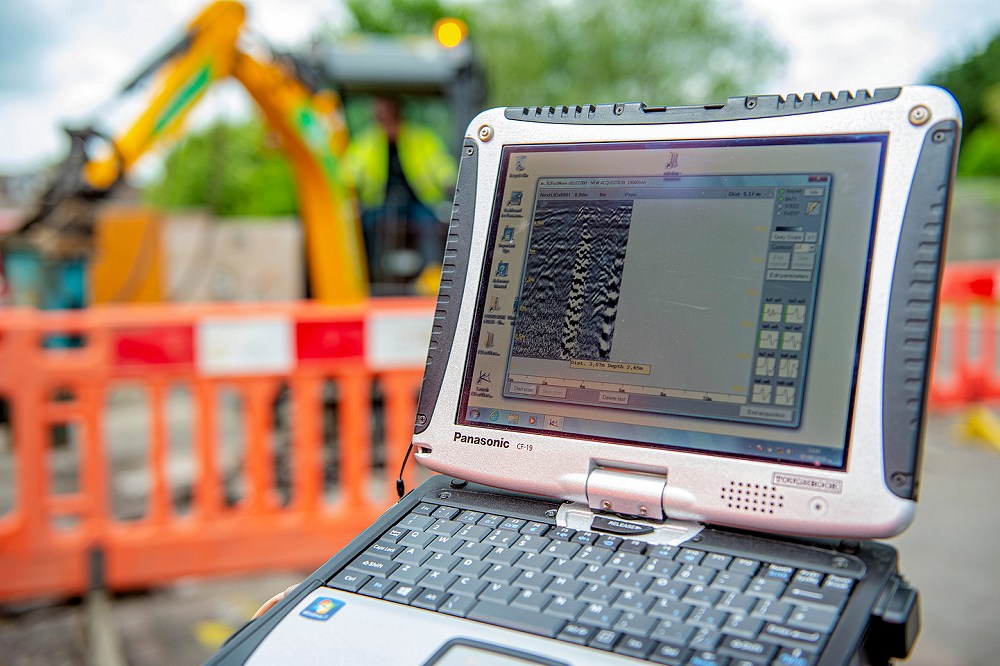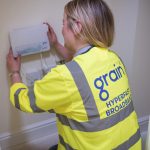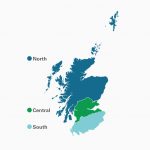Openreach Deploy Ground Penetrating Radar to Help UK FTTP Rollout
Openreach’s (BT) effort to cover the whole of Salisbury (Wiltshire) with their Fibre-to-the-Premises (FTTP) based ultrafast broadband ISP network (here) has been given a boost by a new Ground Penetrating Radar (GPR) technology, which reduces costs and disruption by precisely mapping where to dig new cables.
The new technology has already gone through a number of successful pilots in Ashford (Kent) and Exeter, which took place alongside their recent Micro Ducting trial that we’ve covered before (here); the latter is also being used in Salisbury. The GPR solution is now being scaled-up so that Openreach’s engineers can use it as a cost and time saving technique across the UK, starting in Salisbury.
GPR essentially uses a transmitter to send pulses of high frequency radio waves through the ground and this then bounces back off objects hidden underground to a receiving antenna, which creates a digital “picture” or cross-section of what lies underneath from the signal variations.
Advertisement
The new approach helps to map the route with greater accuracy and it’s particularly good at identifying, and thus avoiding, existing infrastructure or solid objects that could otherwise create problems during the build. All of this is very useful when deployed alongside Micro Ducting, which digs a much narrower trench to a depth of 250mm and obviously needs to avoid existing infrastructure.

Where possible Openreach prefers to run new fibre optic cables through or over their existing underground cable ducts and telegraph poles, but often they do need to dig trenches and this is where the new methods could be very useful. Initially both GPR and Micro Ducting are being deployed to connect 130 premises in Bemerton, in the Western part of the city, over the coming weeks.
Andy Whale, Openreach’s Chief Engineer, said:
“This is the first location in the UK where we’re aiming to upgrade an entire city network in a single year, so it’s a hugely ambitious project, but being able to use time and cost saving innovations like radar and micro ducting, combined with the unrivalled experience and skill of our engineering teams – means that we can have more confident that it’s achievable.
We’re constantly looking at ways of improving and evolving the build process, and these are just the latest additions to our innovations toolkit.
Micro ducting allows our teams to install new cables much more quickly – up to 300 metres each day. The technique is also less disruptive for local residents, reducing the amount building work – road works and all the associated disruption – by about 50 per cent, and it also uses fewer resources so it helps to reduce our costs and build times.
Using radar also makes the whole process safer. We’re digging into pavements that have other utilities like electricity, gas and water buried underneath. The last thing we want to do is cut off people’s supply by accidentally damaging a cable, so GPR means we can keep that risk to an absolute minimum.”
All of this should help Openreach to achieve their revised targets (here), which will now seem them aim to cover 4 million UK homes and businesses with “full fibre” FTTP broadband by March 2021 (1.2 million have already been completed) and there’s an ambition for 15 million by around 2025. After that they also have an aspiration to reach “the majority of the UK, if the right conditions to invest are in place.”
Advertisement
As for Salisbury, Openreach has pledged to complete their FTTP deployment to all 20,000 premises across the cathedral city by April 2020 (i.e. within a year). It’s worth pointing out that GPR is not a new method in the civil engineering field (it’s often used for road and airport surveys), although we haven’t seen Openreach using it before.
Mark is a professional technology writer, IT consultant and computer engineer from Dorset (England), he also founded ISPreview in 1999 and enjoys analysing the latest telecoms and broadband developments. Find me on X (Twitter), Mastodon, Facebook, BlueSky, Threads.net and Linkedin.
« BT Ponder TV Funding for UK Netflix Rival Britbox with BBC and ITV
INCA Awards Broadband Quality Mark to First UK Wireless ISP »

















































Comments are closed